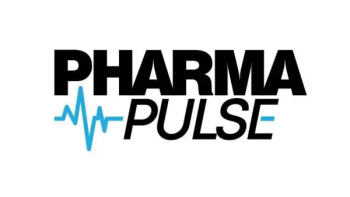
The Evolution of the CGT Launch and Distribution Model
In the final part of his Pharma Commerce video interview, Mark Sawicki, PhD, Cryoport Systems’ president and CEO, predicts how he anticipates the model growing over the next three to five years, especially as global demand and regulatory complexities increase.
In a video interview with Pharma Commerce, Mark Sawicki, PhD, Cryoport Systems’ president and CEO, discusses the evolving state of global cell and gene therapy commercialization. Sawicki highlighted significant progress in key operational areas, noting that companies are now better prepared for commercial launches than in the past. Early challenges in manufacturing readiness have been largely resolved, with organizations now demonstrating clear strategies, scalable capacity, and well-vetted supply chains. Regulatory hurdles have also been substantially addressed, and most companies are effectively engaging primary launch sites, especially major academic medical centers, ensuring they are trained and ready for product deployment.
However, several persistent challenges remain. Reimbursement, particularly in Europe, continues to be a major hurdle—even for mature companies with marketed therapies. Another notable issue is physician education, especially outside of large teaching hospitals. Many community-based physicians lack a deep understanding of cell and gene therapies, creating a barrier to broader adoption.
Sawicki also pointed to community care engagementas an area needing attention. While major centers are prepared, regional and community sites are lagging in terms of readiness and support. According to available market data, current therapies are reaching only about 20% of the addressable patient population in the United States and Europe, with even lower uptake globally.
Finally, standardization of processes, particularly across clinical sites and within supply chain systems, remains an issue. Inconsistent procedures and infrastructure gaps at these levels hinder the ability of sites to fully support these complex therapies. Addressing these shortcomings will be critical to expanding access and realizing the full potential of cell and gene therapy worldwide.
Sawicki also comments on how supply chain expectations have shifted amid tighter funding, FDA leadership changes and evolving CMC standards; the critical role of cryopreservation, real-time logistics data and AI-enabled fulfillment in protecting product integrity and patient outcomes; what pharma leaders can borrow from CGT’s operational playbook to improve resilience across therapeutic areas; and much more.
A transcript of his conversation with PC can be found below.
PC: How do you envision the CGT launch and distribution model evolving over the next three to five years, especially as global demand and regulatory complexities increase?
Sawicki: I think most folks, as they're looking to launch, they're learning from the past, as it relates to mistakes that were made. They are looking at standardization upfront. They're looking at cost efficiencies up front. They're looking at trying to harmonize against what is already out there in the field, so that a clinical site doesn't need to bring on a ninth or 10th different software platform to be able to support their given therapy class.
Scale is another critical consideration. Now that there's a lot of manufacturing infrastructure out there, both from the sponsor as well as the CDMO markets, from a supply chain standpoint, the infrastructure around the temperature-controlled storage, and distribution has greatly improved. Obviously, the volume of equipment for storage and distribution has greatly improved, and the infrastructure around facilities to be able to support all these markets has greatly improved, so what it does is it lowers the barrier to launch. It lowers the barrier from a risk standpoint, because you already have the pioneers in the market that have done it, and it facilitates smoother launches, and then allows them to focus on driving absorption into that addressable market.
I think that's one of the things that you're going to see is a huge focus, because they’ve got all those large academic centers down, and they really understand it. That's really kind of a turnkey element. It's really focused on how do we reach those other 80%, so you're going to see those distribution models really changing to support that community care engagement over time. That means you're going to have novel models where the sites can engage and put infrastructure in at a fraction of the cost that they would have had to traditionally to be able to support cell and gene. You're going to see, a lot better educational paradigms for the physicians to be able to better understand the value of cell and gene in space. You'll see the maturation of the reimbursement models to be able to better support this, as the ROI becomes better understood.
Regulatory wise, there's a pathway. There’s a clear understanding of the regulatory pathway to drive these across most of the primary geographies. I think all of these things make it easier. If you look back from 2017 to 2023, we were averaging one or two approvals a year. We're now up to that five to six approvals a year range. I think that'll maintain over the next couple of years, and I think by 2030, you're probably looking at 10 to 12 a year, so that really changes the game as it relates to acceptance and awareness. That much investment going into this space will also drive cost optimization, and that's the next big element, to drive that cost element down where you're not spending, hundreds of thousands, or millions of dollars on a treatment, but that cost model will come down to probably tens of thousands to hundreds of thousands, which will increase acceptance and availability across the globe.
Newsletter
Stay ahead in the life sciences industry with Pharmaceutical Commerce, the latest news, trends, and strategies in drug distribution, commercialization, and market access.




